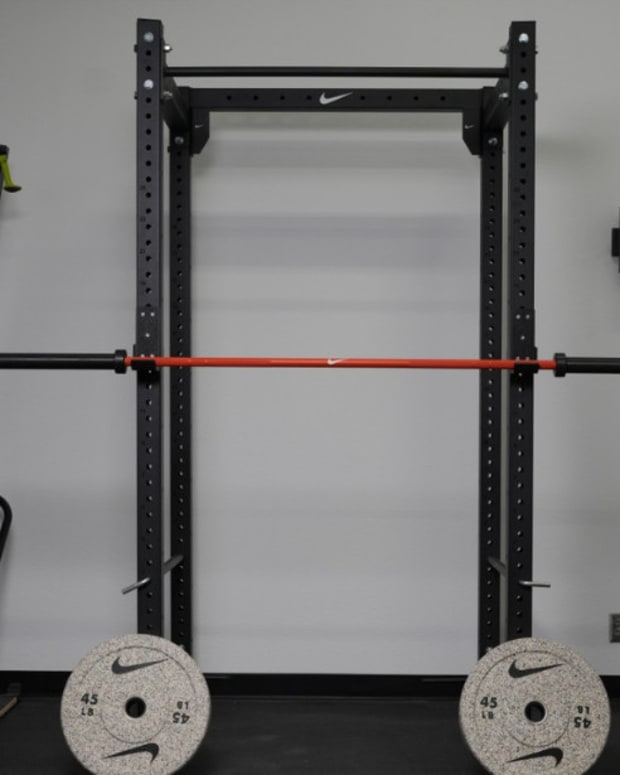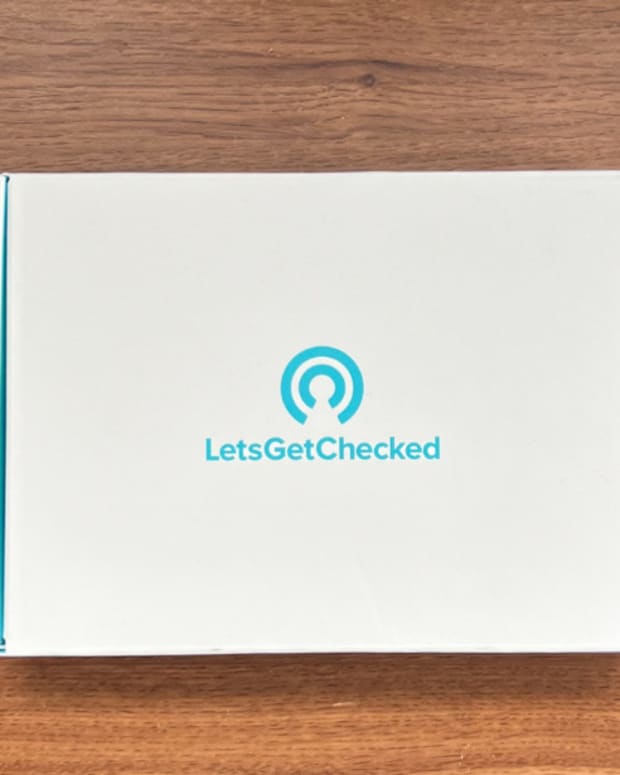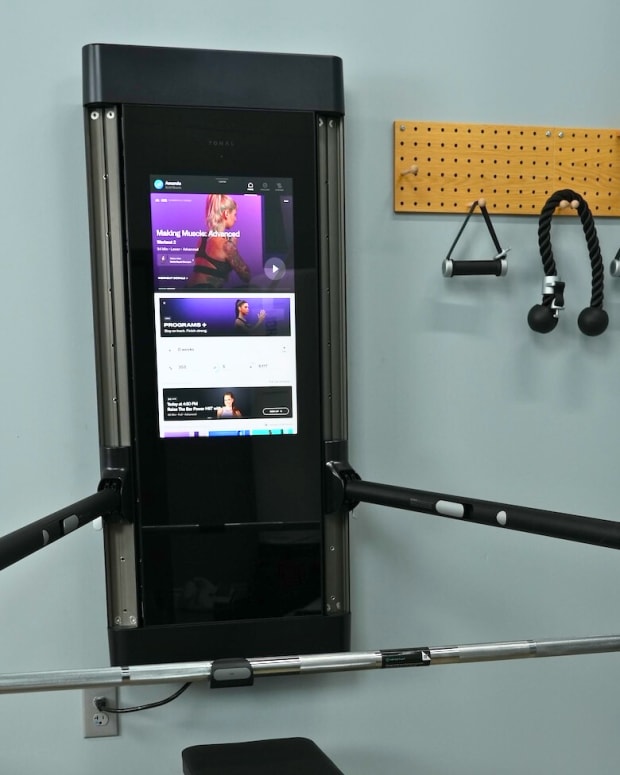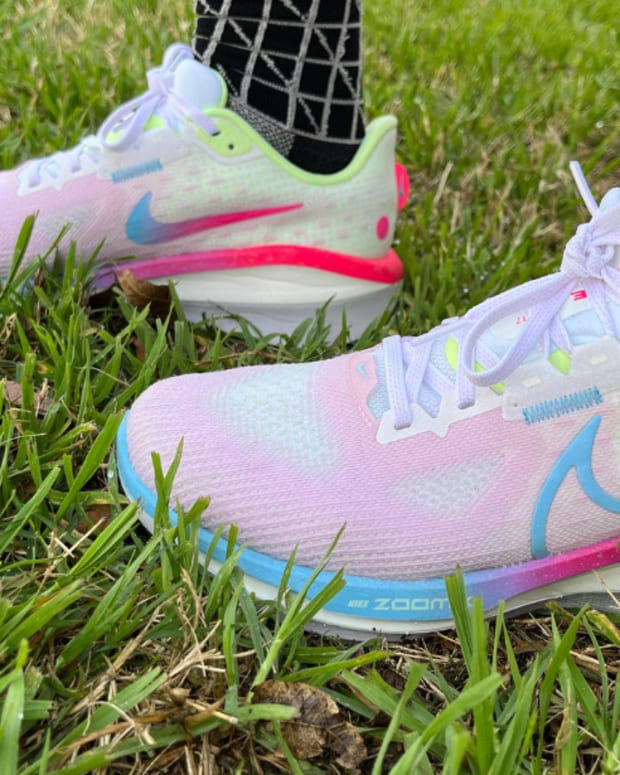The products featured in this article have been independently reviewed. When you buy something through the retail links on this page, we may earn commission at no cost to you, the reader. Sports Illustrated editorial staff are not involved in the creation of this content. Learn more here.
How many steps do you take in a day? If you’re trying to keep tabs on your step count, boost calories burned, and increase activity, your best bet is to lace up your shoes and invest in a fitness tracker.
People tend to move more and experience health benefits when they pay attention to their step count and become more active. A 2019 study in the Journal of Science in Sport and Exercise showed that participants made significant improvements in body composition just by increasing their weekly steps. And you don’t have to participate in intense workouts to see results–just taking more steps every day can have a positive impact as it increases your daily activity.
An accurate pedometer is incredibly helpful for keeping tabs on how much you’re moving. Luckily, there are plenty on the market that work well.
What to know which models are the best pedometer watches and apps on the market in 2024? We’ve rounded up a few of our favorites. Read on to find the best fitness tracker for you.
Our Picks for the Best Pedometers of 2024:
- Best pedometer with GPS: Garmin Forerunner 55
- Best ultra-durable pedometer: Polar Grit X
- Best pedometer watch: Fitbit Versa 3
- Best pedometer for seniors: 3d FitBud Simple Step Counter
- Best wrist pedometer: GRV Fitness Tracker
- Best budget pedometer: iGank Simple Walking Pedometer
- Best pedometer for hiking: Suunto 5
- Best pedometer app: Pacer
Best Pedometer with GPS: Garmin Forerunner 55
Adventurers, this one's for you: This $199.95 pedometer watch has GPS, which enables it to track your routes, pace and distance just about anywhere. You’ll also be able to gauge your heart rate, track your cadence and evaluate your recovery time. The battery lasts up to two weeks in smartwatch mode and up to 20 hours in GPS mode.
Overall, this user-friendly smart watch is filled with functions to keep your wellness goals moving forward.
Related Post: The Best Garmin Watch Models
Pros:
- Three color options
- Has its own GPS
Cons:
- Low-resolution display (1.04-inch screen)
- Not a touchscreen—you’ll select options using the side buttons or the app
- No sleep tracking, which several other pedometers at this price offer
Best Ultra-Durable Pedometer: Polar Grit X Pro
This $499.95 pedometer from Polar is seriously durable (think sapphire glass for superior protection), and includes a variety of features. It’s water-resistant down to 100 meters, and can withstand temps from -4℉ up to 122℉. And everything can be controlled with the tap of a finger on the touchscreen.
The battery can last up to seven days on a single charge, giving you up to 40 hours of training with heart rate and GPS functions and up to 100 hours when it’s on power-save—so you’ll get pretty long battery life, too.
Pros:
- Three color options
- Can add optional external heart rate sensors
Cons:
- Abundance of fitness features may be overwhelming
Best Pedometer Watch: Fitbit Versa 3
Fitbit makes pedometer watches that are stylish and functional, and the $155.95 Fitbit Versa 3 is no exception. This smart watch tracks heart rate, VO2 max (maximum oxygen consumption during exercise) and SpO2 (blood oxygen levels), as well as breathing rate and skin temperature while you sleep. It can even use Google Assistant or Amazon Alexa to check news, set alarms, or control the lights in your house.
Users also have the option to sign up for Fitbit Premium, which gives you guided workouts, detailed sleep intel, fitness challenges and guided meditation for $9.99 per month or $80 for a year.
Plug it in to fully charge it in just 12 minutes and it should last for about six days on a single charge.
Pros:
- Four color options
- Easy to swap to another band (sold separately from various companies; starting around $5)
- Built-in GPS
Cons:
- Can’t get all the features without premium subscription
Best Pedometer for Seniors: 3d FitBud Simple Step Counter
You don’t have to invest a ton of money into technology to track your steps. Sometimes, a simple clip-on pedometer is all you want. If that’s the case, try the $24.99 3d Fitbud. Just clip it on your clothing (it can even go on a sock because it’s so light), or use the neck lanyard and start walking.
It doesn’t sync to an app or offer a calorie counter, but that may be an advantage for some users who prefer a low-tech approach. The CR2032 watch battery lasts up to about 12 months without the need to charge it regularly, so it’s fairly low-maintenance too.
Pros:
- Eight color options
- Lightweight at less than one ounce
- Very simple to use
Cons:
- Very limited functions—only tracks steps
- May not be accurate for all users. Some Amazon reviewers mention that they had an issue with accurately tracking steps, while others say it worked well
Best Wrist Pedometer: GRV Fitness Tracker
The $22.49 GRV Fitness Tracker is a super-simple pedometer that works without a cell phone, so there is no app to go back and forth with—and no Bluetooth, either. This is good for people in search of a simple start to step counting.
To charge it, just plug the device directly into a USB-A port; no cord required. In two to three hours, it will be fully charged and lasts up to seven days. It does track steps taken, calories burned, distance walked or jogged and sleep time. The wrist pedometer is also IP67 waterproof and tells time.
Pros:
- Six colors, with other bands available for purchase separately
- Waterproof
- Tracks steps, calories burned, distance traveled and sleep time
Cons:
- Some Amazon reviewers found setup to be tricky
- No Bluetooth
Best Budget Pedometer: iGank Simple Walking Pedometer
This $17.99 simple clip-on walking pedometer offers an easy-to-use, basic design and function perfect for people who don’t want pricy wearables with seemingly countless functions. You don’t need a lanyard or clip; the carabiner snaps on to a belt loop, bag or wristlet. Battery life is exceptional, as it can last up to a year. And to reset the number of steps for a new day of activity, just hold the button down.
There is also no long setup, you just press a button, clip it on and start moving. Some Amazon reviewers found that it was inaccurate for smaller intervals of movement (i.e., ten steps to the bathroom), but that it worked well for larger step counts.
Pros:
- Six colors
- Carabiner attaches securely to your belt loop or purse
Cons:
- May not be accurate for small amounts of movement
Best Pedometer for Hiking: Suunto 5
The Suunto 5 is a $269 attractive wrist smart watch that lets you track workouts, movement and progress. This water-resistant pedometer is GPS enabled so you can embark on a variety of different adventures just about anywhere. It syncs to an app that offers 3D views of routes, but it does not have a touchscreen. And it will stay powered up on any of those treks because it gives you up to 40 hours of battery life.
Even though it’s ideal for hiking, the Suunto 5 has 80 customizable sports modes for a variety of activities such as running and biking. And it has a large 1.1-inch display so all your stats are easy to see in real-time. At the end of a long, active day, you can also track your sleep. In it for style and function? There are removable, replaceable straps available to mix up your look. But don’t expect it to manage email or other smart features.
Related Post: The Best Hiking Shoes for All Your Adventures
Pros:
- Six colors
- GPS-enabled
- Comes with 80 customizable sports modes
Cons:
- No touchscreen
Best Pedometer App: Pacer
Pacer is known as one of the best pedometer apps because it appeals to people of all fitness levels. It’s also free, which lets you check it out without having to pay a dime (though there is a paid version with more features for $9.99 a month or $49.99 a year). The free version does let you track food, blood pressure, and distance moved; record routes using your phone’s GPS; and see about how many calories you burn during the day or a specific activity. You’ll also get access to community groups and challenges with the paid version, which can be great if you want extra motivation.
Pros:
- Free and paid versions
- Great for general use
- Some connectivity with wearables
Cons:
- Can drain phone battery quickly
Why Buy a Pedometer?
There are many benefits to using a pedometer. Whether you have an ankle pedometer, clip-on pedometer or wrist pedometer, or you use an app to measure your steps, knowing how much you’re moving keeps you mindful of your activity levels. Sometimes seeing how many steps you are getting in a day can motivate you to move more.
Wearing a pedometer has been linked to greater activity levels, better health and modest weight loss.
How to Wear a Pedometer
How you wear a pedometer depends on the type of pedometer you buy. A clip-on pedometer can be clipped to your waistband or a lanyard around your neck, while an ankle pedometer goes around your ankle. Wrist pedometers are worn like a watch.
What to Look for in a Pedometer
We found a variety of pedometers and highlighted what we think are the best pedometers for walking, hiking, and running. There are a few things to look for when buying a device to count steps.
Features
Do you want a pedometer that solely counts steps? Look for a basic model—even a clip-on pedometer will do the trick. If you’re looking for additional functions, a wearable may be better for your needs. Some pedometer watches can count steps, track calories burned, keep tabs on how much you get up in the day, and even do extras like play music from your phone through your workout earbuds or manage the lights in your living room. Base your purchase on your needs and the functions you find most useful.
Tech
One of the biggest advancements in wristband pedometers is the ability to provide smart functions like alert you when you get a text, or turn off the lights in your kitchen. A GPS function can prevent you from getting lost and open up a variety of training routes for your next outdoor adventure.
Style
When you’re shopping for a pedometer, look into what style suits you best. If you only want to count steps while you are out on a hike, a clip-on pedometer or ankle pedometer may be all you need. But if you want something that you can wear all the time, or that will stay put alongside your body (and perhaps track your heart rate), a pedometer watch may be better.
Accuracy
Accuracy is important, but it depends on your needs. If you want a digital pedometer that’s going to track every step, you may be better off getting something on your wrist. That’s not to say that clip-on pedometers aren’t accurate either. Overall, look for one with good ratings for accuracy, and remember that it may not be completely accurate but can give you an idea of how much you’re moving. On the flip side, be wary of step counters that others say seem to over- or undercount small amounts of movement, as that can be a red flag that the device isn’t quite accurate.
Cost
Pedometer prices vary—basic models start out at around $25, while techy options with more features can top $500. Prices tend to go up based on the more features you add, the brand name, and/or the materials used in the device.
FAQs
- What is the best place to wear a pedometer?
Wherever it works best for you while still being accurate. Many pedometers can be worn on your wrist, while others are attached to a lanyard around your neck or clipped to a belt loop. Choose whichever makes sense for your lifestyle and preferences.
- Are smartphone pedometers accurate?
They can be, but you’ll need to keep your smartphone on you (literally) all day if you want to really see how many steps you’re taking.
- Will a pedometer work in your pocket?
It can. There are many pedometer apps on the market now—some have better reviews than others. We like Pacer for its ease of use. There are also clip-on pedometers that can work when clipped on your clothing or kept on a lanyard. Keep in mind that if you want to see how many steps you take all day, you’ll need to keep the pedometer on you all the time.
- How many miles is 10,000 steps?
About five miles.
- Does a pedometer help you burn calories?
A pedometer can increase your calorie burn by prompting you to exercise or move more. Or, if you’re already working out and it has a heart rate monitor and calorie metrics, it can inspire you to push harder and/or longer to burn more calories.
Final Thoughts
Pedometers can meet a variety of health and fitness goals. They can give athletes better insight to improve their performance, and they can help folks who are more sedentary add more movement into their day. The devices come at a variety of price points, and are available in a variety of colors, styles and finishes. There’s a pedometer for everyone out there, and you don’t have to spend a fortune to get one that’s right for you.
Prices are accurate and items in stock as of publish time.

















